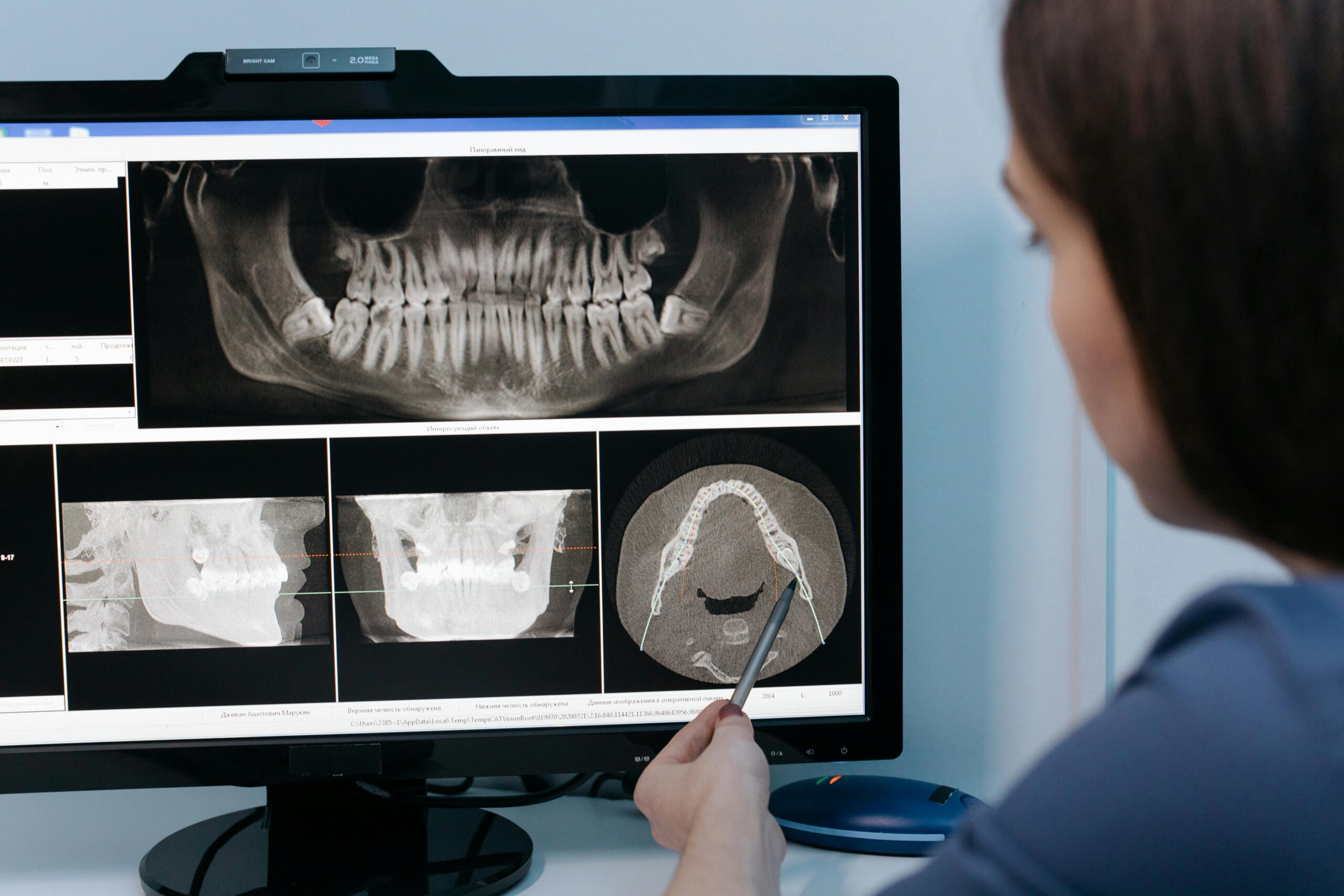Technology has changed many areas of healthcare and dentistry is no exception. One of the biggest changes is the use of CT scans, especially Cone Beam CT (CBCT) to diagnose and plan. These advanced imaging tools allow us to see more, plan better and get better results for our patients. In this article we will look at how CT scans are used in dentistry and how they make care more precise.
What is a CT Scan and how is it used in dentistry?
A CT scan or Computed Tomography scan is a type of imaging that uses X-rays to produce detailed cross sectional images of the body. In dentistry a special type of CT scan called Cone Beam CT (CBCT) is used. Unlike traditional CT scans, CBCT machines are designed to scan the head, neck and jaw and produce 3D images of dental structures, soft tissues, nerve paths and bone.
CBCT technology allows us to see areas that 2D X-rays may miss. This is especially helpful for diagnosing complex cases, planning treatment and monitoring results. CBCT imaging makes dental treatment safer and more effective.
CT Scans in Dental Care
Implant Planning
When placing implants it’s important to know exactly where to place them. CBCT scans produce detailed images of the jawbone so we can assess bone density, thickness and any anatomical structures to avoid such as nerves or sinuses. This means precise placement and less complications.
Root Canal
For root canals it’s important to understand the anatomy of a tooth. Some teeth have extra or hidden canals that can’t be seen on regular X-rays. CBCT scans allow us to see the whole root system so we can treat the tooth thoroughly and avoid repeat treatment.
Orthodontics
In orthodontics 3D imaging helps us assess tooth alignment and jaw structure. This information is key to creating accurate treatment plans for braces, aligners or other orthodontic appliances. CBCT scans give us the complete picture for patients of all ages.
TMJ Disorders
The temporomandibular joint (TMJ) connects your jaw to your skull and can cause pain or limited movement if it’s not functioning properly. CBCT scans give us a clear view of the joint so we can identify structural issues and plan treatment for the patient.
CT Scans in Dentistry
- Better Diagnosis: 2D X-rays can only show so much. With CBCT we can see 3D images, we can detect fractures, impacted teeth or hidden infections. This means more accurate diagnosis.
- Better Treatment Planning: Accurate imaging allows us to plan treatment with more confidence. For example knowing the exact position of a nerve or sinus can make surgeries like implant placement safer and more successful.
- Patient Education: When patients see 3D images of their teeth and jaws they understand their condition and treatment options better. This transparency builds trust and allows patients to make informed decisions about their care.
Safety and Accessibility
- Radiation: While CT scans involve radiation CBCT technology uses lower doses than traditional CT scans. We assess each patient’s needs before we recommend imaging.
- Getting Imaging: For patients who need advanced imaging but are concerned about cost, programs like RadiologyAssist make it easier to get affordable scans. They partner with accredited imaging centers across the country, with clear pricing and quick scheduling so patients can get the imaging they need without the financial stress.
Dental and Imaging Experts Working Together
Valley Ranch Dental combines advanced technology, like CBCT scans, with affordable imaging solutions through RadiologyAssist, ensuring patients get access to affordable imaging services for all their dental needs.
Bottom Line
CT scans, especially Cone Beam CT, have changed dentistry by making diagnosis more accurate and treatment more successful. From implant planning to TMJ disorders advanced imaging is key to modern dentistry.






